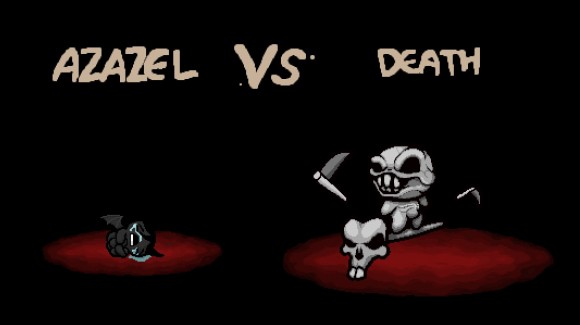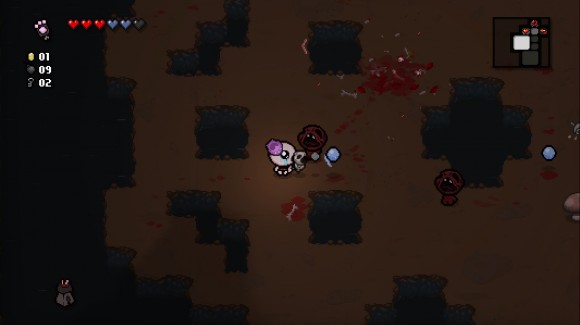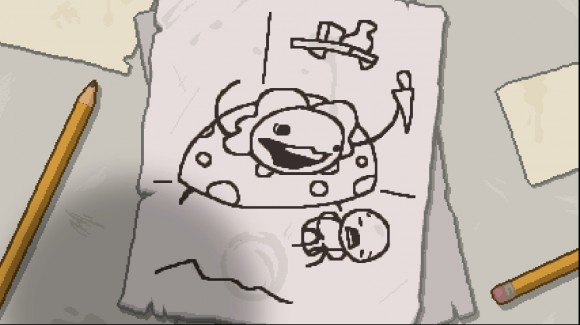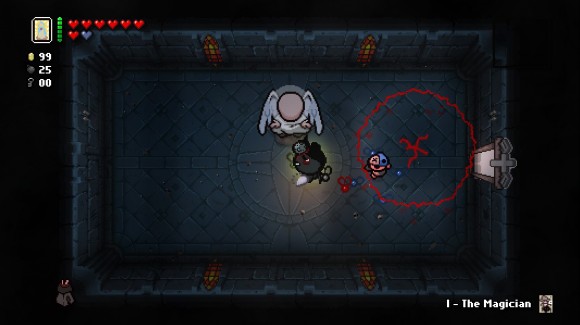The Binding of Isaac came to us from Edmund McMillen, best known for his work on Super Meat Boy. It was a rogue-like dungeon crawler with top-down shooter mechanics separated from the pack by its dark themes and great game design. Originally developed in flash, McMillen confessed the limitations of the platform did not allow him to truly make the game he wanted. He could not stack some of the powers as he wanted, make large rooms, or simply have the amount of content he felt the game deserved. With a team now at his disposal, he set out to re-make the game from the ground up. I was skeptical of Rebirth at first, for many developers, working within the constraints of a system forces them to do truly clever things that are lost when every resource desired becomes available. Fortunately my fears were unfounded and The Binding of Isaac Rebirth turned out better than the original in almost every way.
Does the name The Binding of Isaac sound familiar? No? Ya’ll need Jesus then. It refers to a bible story where God asks Abraham to kill Isaac, his own son to show him that Abraham loves his lord above no other. The story of the Binding of Isaac is the same. Isaac lives with his mother, who starts hearing voices from God, first commanding her to take all of Isaac’s toys and clothing, locking him in a room, and eventually hearing that she must end his life. Looking at his mother coming to kill him from a crack on his door, Isaac jumps through a trap door into the basement, hoping to escape. This is where the game begins.
The objective of the game is to make it through increasingly difficult levels. The way navigation work is similar to the original the Legend of Zelda, where you will move from room to room completing the map as you go. There are of course numerous monsters in these levels, and you can only defend yourself with the only weapons available to Isaac; his tears, which act like bullets, killing his enemies. The monster design is one of the most interesting parts of the game, with enemies drawn straight from a child’s imagination and nightmare. They range from something as mundane as flies to twisted constructs made of viscera that will surely make you ask “what the fuck is that thing”.
As you progress through the levels, you will get different items. As this is a rogue-like, the layout of the floors, and the items that you get will change with each run. Items can be passive, granting buffs, and other boosts to help you grow stronger (though some require some kind of trade off, such as an item that greatly increases your shooting at the cost of lowering your damage). Like the monsters, the items also draw from a child’s experience and imagination, including everything from stories of the bible, to video-game references, to things that a child like Isaac would find cool. There is usually one item room per level, but that is not the only way to obtain items. Things like secret rooms, special items, and other abound in the game, always making it feel like there is always a lot left to discover. The sheer amount of items and other unlocks make it so no two runs are the same, and you will definitely need a healthy amount of time to see all the content.

One of the best things to come out of the remake is the ability to stack some of the powers that the items grant you. Due to the limitations that Flash imposed on the original game, many times items did not work with each other the way they should, or at all. Often some items completely overwrote others. This is no longer the case, as now everything you pick up stacks, with some results that can make you feel like you have become akin to a god. It does make the game easier, but in a good way. It eliminates a lot of the frustration of losing a good run due to a bad item combination. The other great addition to the game is the capacity to quit and pick up right where you left off. An addition that allows the player to just pick up and play the game when they have some time available. This is especially important for those who choose to play the game on a hand held console.
As expected in a remake, this game features brand new graphics, new enemies, items, and bosses. There is also a brand new soundtrack, which is very good, but I still like the original better. That is up to personal taste though. The most obvious change in terms of gameplay is the addition of bigger rooms. Previously the rooms were only the size of the screen, however, now the game offers rooms that can be several screens big. These can have several boss monsters, or just a more complex layout. They add a great deal of variety to the game.

Still the remake is not perfect. The Binding of Isaac Rebirth depends a lot on your luck as you go through the game, and there are times where it feels like the items the game drops are somehow the exact ones you did not need. It is still very possible to go entire floors without seeing a key, which makes it impossible to get the free item in the dungeon. Or you may get a lot of one specific type of item, which may leave you with a character that does not suit your style at all. It does force you to adapt, but sometimes, it does still feel like the spawn rates for things like keys or bombs could have been handled better.
The Binding of Isaac Rebirth is a great remake, that is a must own for fans of the original, and the version that new comers want to play. It does still feel like a good run comes down to luck, but a lot of those edges have been smoothed over. With hidden characters, levels, and at least 16 different endings, The Binding of Isaac Rebirth has enough content to keep one entertained for a long time. I clocked in over 90 hours in the original, and I look forward to doing the same on this remake.








